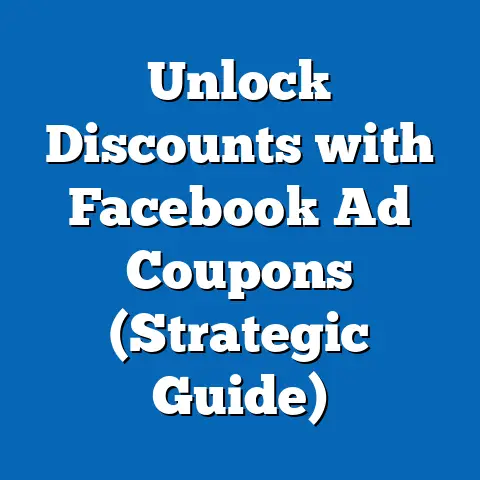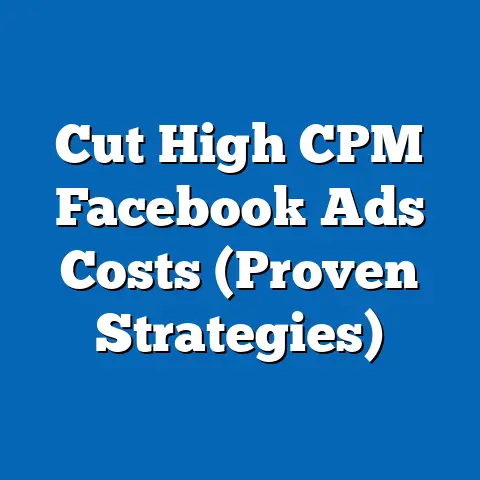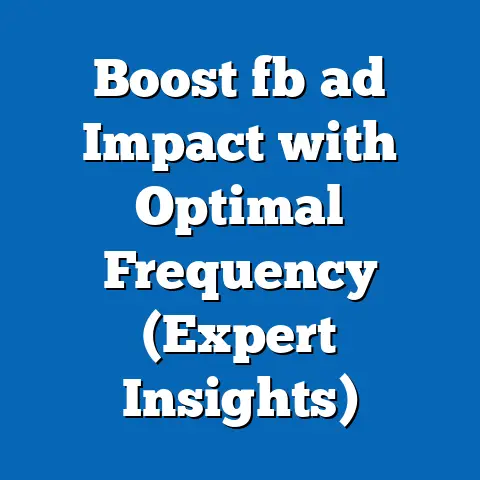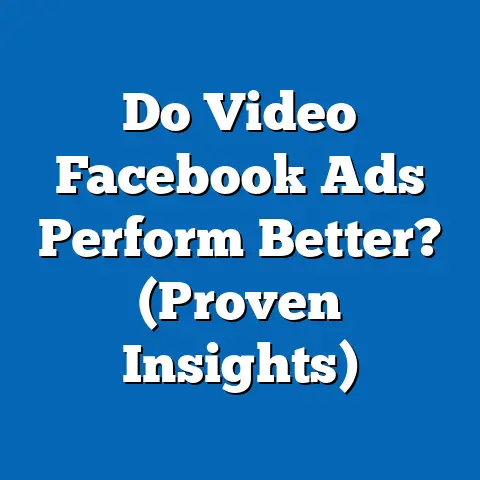Craft Compelling Facebook Ads for Home Sale (Pro Tips)
What if I told you that the difference between selling your home in a week versus languishing on the market for months could boil down to one powerful Facebook ad? In today’s fast-paced real estate market, grabbing a buyer’s attention is tougher than ever. Open houses are great, but they only reach the people who already know about your listing. That’s where Facebook ads come in – a game-changer for real estate agents and homeowners alike.
I’ve seen firsthand how a well-crafted Facebook ad can transform a listing from just another house on the market to the dream home someone’s been searching for. It’s not just about pretty pictures; it’s about strategically targeting the right audience, crafting compelling copy, and using visuals that stop the scroll. With the rise of digital marketing, Facebook ads have become indispensable for anyone looking to sell a home quickly and efficiently. In this article, I’ll share my pro tips, learned through years of experience, on how to create Facebook ads that not only capture buyer attention but also drive real results. Let’s dive in and turn your listing into a buyer magnet!
Understanding Your Target Audience
Before you even think about designing an ad, you need to know who you’re trying to reach. It’s like trying to hit a target blindfolded – you might get lucky, but it’s far more effective to take off the blindfold and aim.
Define Your Ideal Buyer
The first step in creating effective Facebook ads is understanding your target audience. Who are you trying to reach with your ad? What are their needs, desires, and pain points? These are essential questions to consider before you start crafting your ad.
- Demographics: Consider factors like age, gender, income, education, and location. Are you targeting young professionals, families, or retirees? Each group has different needs and priorities.
- Psychographics: This delves into their values, interests, lifestyle, and attitudes. Are they eco-conscious? Do they value luxury or practicality? Understanding their psychographics helps you tailor your message to resonate with them.
- Behavioral Traits: How do they behave online? What websites do they visit? What Facebook pages do they like? This information can help you narrow down your targeting on Facebook.
For example, if you’re selling a luxury condo in a vibrant city, your ideal buyer might be a young professional aged 25-40, with a high income, interested in urban living, fine dining, and cultural events. On the other hand, if you’re selling a family home in the suburbs, your ideal buyer might be a family with young children, aged 30-45, with interests in schools, family activities, and community events.
Creating Buyer Personas
Once you have a good understanding of your target audience, it’s time to create buyer personas. A buyer persona is a semi-fictional representation of your ideal customer, based on research and data about your existing and potential customers.
Here’s a step-by-step guide to creating detailed buyer personas:
- Gather Information: Conduct interviews with current and past clients, ask for feedback, and analyze data from your website and social media channels.
- Identify Common Traits: Look for patterns and common traits among your ideal buyers. What are their goals, challenges, and motivations?
- Create a Persona Profile: Give your persona a name, age, occupation, and a detailed background. Include their goals, challenges, values, and pain points.
- Add a Photo: Find a stock photo that represents your persona. This helps to humanize the persona and make it more relatable.
Here are a few examples of different buyer personas:
- First-Time Homebuyer (Sarah): A 28-year-old marketing assistant, Sarah is looking to buy her first home. She’s tired of renting and wants to start building equity. Her budget is limited, and she’s looking for a starter home in a safe neighborhood with good schools.
- Family (The Johnsons): John and Mary Johnson are a family with two young children. They’re looking to upgrade to a larger home with a backyard and a good school district. They value safety, community, and convenience.
- Retiree (Robert): Robert is a 65-year-old retiree looking to downsize. He wants a low-maintenance home in a quiet, walkable neighborhood with access to amenities like parks and grocery stores.
Researching Buyer Preferences
Now that you have your buyer personas, it’s time to research their preferences. What are they looking for in a home? What features are most important to them? What are their deal-breakers?
- Facebook Audience Insights: This tool provides valuable data on your target audience’s demographics, interests, behaviors, and more. You can use it to identify the Facebook pages they like, the topics they’re interested in, and the products they’re buying.
- Surveys: Conduct surveys to gather direct feedback from your target audience. Ask them about their home-buying preferences, their budget, and their must-have features.
- Online Forums and Communities: Monitor online forums and communities related to real estate and home buying. This can provide valuable insights into the questions and concerns of potential buyers.
Tailoring your ads to meet these preferences is crucial for success. For example, if your target audience values energy efficiency, you might highlight the energy-saving features of the home, such as solar panels or energy-efficient appliances. If they value outdoor living, you might showcase the backyard and patio area.
Takeaway: Understanding your target audience is the foundation of effective Facebook advertising. By defining your ideal buyer, creating buyer personas, and researching their preferences, you can craft ads that resonate with them and drive results.
Crafting Your Ad Copy
Once you know who you’re talking to, the next step is to figure out what to say. This is where the art of persuasive writing comes in.
The Art of Persuasive Writing
Persuasive writing is the art of convincing your audience to take a specific action. In the context of Facebook ads, that action is usually clicking on your ad and visiting your website or contacting you for more information.
Here are a few key principles of persuasive writing:
- Storytelling: People love stories. Use storytelling to connect with your audience on an emotional level. Share a story about a family who found their dream home or a couple who downsized and simplified their lives.
- Emotional Appeal: Tap into your audience’s emotions. What are their hopes, dreams, and fears? Use emotional language to connect with them on a deeper level. For example, instead of saying “This home has a large backyard,” you might say “Imagine your children playing in this spacious backyard, creating memories that will last a lifetime.”
- Urgency: Create a sense of urgency to encourage people to take action now. Use phrases like “Limited time offer,” “Don’t miss out,” or “Schedule your showing today.”
I remember working with a client who was struggling to sell a beautiful historic home. The original ad copy was bland and focused on the home’s features. I rewrote the copy to tell the story of the home’s history and the families who had lived there over the years. I also added a sense of urgency by highlighting the unique opportunity to own a piece of history. The ad performed much better, and the home sold within a few weeks.
Key Elements of Effective Ad Copy
Effective Facebook ad copy typically includes the following elements:
- Headline: The headline is the first thing people see, so it needs to be attention-grabbing and relevant. Use strong verbs, numbers, and questions to pique their interest. For example, “5 Reasons Why This Home is Perfect for Your Family” or “Looking for Your Dream Home? Look No Further!”
- Body Text: The body text provides more details about the home and its features. Focus on the benefits, not just the features. Explain how the home will improve their lives. Use clear, concise language that is easy to understand.
- Call to Action (CTA): The call to action tells people what you want them to do next. Use strong action verbs like “Learn More,” “Schedule a Showing,” or “Contact Us.” Make the CTA button prominent and easy to click.
Here are some examples of strong versus weak ad copy:
- Weak: “Beautiful home for sale.”
-
Strong: “Stunning 4-bedroom home in a top-rated school district. Schedule your showing today!”
-
Weak: “This home has a large kitchen.”
- Strong: “Imagine cooking gourmet meals in this spacious, updated kitchen with stainless steel appliances and granite countertops.”
Strong: “Stunning 4-bedroom home in a top-rated school district. Schedule your showing today!”
Weak: “This home has a large kitchen.”
Incorporating Keywords and Phrases
Keywords are the words and phrases that people use to search for homes online. Incorporating relevant keywords into your ad copy can help improve your ad’s visibility and engagement.
- “Dream home in [Neighborhood] with top-rated schools.”
- “Spacious family home with a private backyard and pool.”
- “Move-in ready condo with stunning city views.”
When I’m crafting ad copy, I always try to put myself in the shoes of the potential buyer. What are they thinking? What are they feeling? What are they searching for? By answering these questions, I can create ad copy that speaks directly to their needs and desires.
Takeaway: Crafting compelling ad copy is essential for capturing buyer attention and driving results. Use persuasive writing techniques, incorporate relevant keywords, and focus on the benefits, not just the features.
Designing Eye-Catching Visuals
In the age of scrolling, visuals are king. Your ad might have the most persuasive copy ever written, but if the image is blurry or unappealing, people will scroll right past it.
Importance of High-Quality Images
High-quality visuals are crucial for Facebook ads. People are visual creatures, and they’re more likely to pay attention to ads with eye-catching images or videos.
- First Impressions: Your visuals are the first thing people see, so they need to make a good impression. Use professional photos that showcase the home’s best features.
- Stop the Scroll: In a crowded newsfeed, your visuals need to stand out. Use bright colors, interesting compositions, and captivating imagery to grab people’s attention.
- Build Trust: High-quality visuals can help build trust with potential buyers. They show that you’re serious about selling the home and that you’re willing to invest in professional marketing.
I’ve seen countless examples of how high-quality images can transform ad performance. In one case, a client was using amateur photos of a luxury home, and the ads were performing poorly. After hiring a professional photographer to take new photos, the ad’s click-through rate increased by over 200%.
Choosing the Right Format
Facebook offers a variety of ad formats, each with its unique benefits for promoting home sales.
- Single Image Ads: These are the simplest ad format, featuring a single image and ad copy. They’re great for showcasing a home’s best feature or highlighting a specific offer.
- Carousel Ads: These ads allow you to showcase multiple images or videos in a scrollable format. They’re perfect for highlighting different aspects of the home, such as the interior, exterior, and neighborhood.
- Video Ads: Video ads are highly engaging and can be used to create a virtual tour of the home. They’re also great for showcasing the lifestyle and community surrounding the home.
- Slideshow Ads: Slideshow ads are a cost-effective alternative to video ads. They allow you to create a video-like experience using a series of images.
When choosing the right format, consider your target audience and your goals. If you’re targeting millennials, video ads might be the most effective option. If you’re trying to showcase multiple features of the home, carousel ads might be a better choice.
Creating Visual Consistency
Maintaining brand consistency in your visuals is essential for building trust with potential buyers. Use the same colors, fonts, and imagery across all your ads.
- Brand Colors: Use your brand colors in your visuals to create a cohesive look and feel.
- Brand Fonts: Use your brand fonts in your ad copy and any text overlays on your visuals.
- Consistent Imagery: Use consistent imagery that reflects your brand’s style and values.
There are many design tools available to help you create visually appealing ads.
- Canva: Canva is a user-friendly design tool that offers a wide range of templates and design elements. It’s perfect for creating professional-looking ads without any design experience.
- Adobe Spark: Adobe Spark is another popular design tool that offers a variety of templates and design elements. It also integrates with other Adobe products, such as Photoshop and Illustrator.
Visuals are more than just decoration; they’re a critical part of your ad’s message. Think of them as the first handshake with a potential buyer. Make it count.
Takeaway: High-quality visuals are essential for capturing buyer attention and building trust. Choose the right format, maintain visual consistency, and use design tools to create professional-looking ads.
Leveraging Facebook Ad Targeting Options
You could have the best ad in the world, but if you’re showing it to the wrong people, it’s like shouting into the void. Facebook’s targeting options are what make it such a powerful advertising platform.
Understanding Facebook’s Targeting Capabilities
Facebook offers a wide range of targeting options, allowing you to reach the right people with your ads.
- Location Targeting: Target people based on their location, such as city, state, or country. This is essential for targeting potential buyers in your area.
- Interest Targeting: Target people based on their interests, such as real estate, home improvement, or interior design.
- Behavior Targeting: Target people based on their behaviors, such as their purchase history, travel habits, or device usage.
- Demographic Targeting: Target people based on their demographics, such as age, gender, income, education, and relationship status.
- Custom Audiences: Create custom audiences based on your existing customer data, such as email addresses or phone numbers. This allows you to target people who have already shown interest in your business.
- Lookalike Audiences: Create lookalike audiences based on your custom audiences. This allows you to reach new people who are similar to your existing customers.
For example, if you’re selling a family home in a specific school district, you might target families with children who live in that school district and are interested in real estate and family activities. If you’re selling a luxury condo in a vibrant city, you might target young professionals with high incomes who are interested in urban living, fine dining, and cultural events.
Retargeting Strategies
Retargeting is the process of showing ads to people who have already interacted with your business. This can be a highly effective way to re-engage potential buyers who have shown interest in similar properties.
- Website Visitors: Retarget people who have visited your website but haven’t yet contacted you. Show them ads for the specific homes they viewed or for similar properties.
- Facebook Page Engagers: Retarget people who have liked or commented on your Facebook page. Show them ads for new listings or upcoming open houses.
- Lead Form Submissions: Retarget people who have submitted a lead form but haven’t yet scheduled a showing. Offer them a special incentive to schedule a showing, such as a free home appraisal.
I once worked with a client who implemented a retargeting campaign targeting website visitors. They saw a significant increase in leads and showings, and they were able to sell the home within a few weeks.
Budgeting and Bidding Strategies
Setting an effective ad budget is crucial for maximizing ad performance while minimizing costs.
- Daily vs. Lifetime Budget: Choose between a daily budget, which allows you to spend a certain amount each day, or a lifetime budget, which allows you to spend a certain amount over the entire campaign.
- Bidding Strategies: Choose a bidding strategy that aligns with your goals. Options include automatic bidding, which allows Facebook to set your bids for you, or manual bidding, which allows you to set your bids manually.
- Budget Optimization: Monitor your ad performance regularly and adjust your budget as needed. If your ads are performing well, you might consider increasing your budget to reach more people. If your ads aren’t performing well, you might consider decreasing your budget or pausing your campaign.
When it comes to budgeting, start small and scale up. Test different ad sets with small budgets to see what works, then allocate more budget to the winning ad sets.
Takeaway: Facebook’s targeting options are a powerful tool for reaching the right people with your ads. Use location, interest, behavior, and demographic targeting to narrow down your audience. Implement retargeting strategies to re-engage potential buyers who have shown interest in similar properties. Set an effective ad budget and choose a bidding strategy that aligns with your goals.
Analyzing and Optimizing Ad Performance
Creating your ads is just the first step. The real magic happens when you start analyzing the data and tweaking your strategy for better results.
Setting Up Metrics for Success
Before you launch your Facebook ad campaign, it’s important to set up metrics for success. What are the key performance indicators (KPIs) that you’ll be monitoring?
- Click-Through Rate (CTR): The percentage of people who click on your ad after seeing it. A high CTR indicates that your ad is relevant and engaging.
- Cost Per Click (CPC): The amount you pay each time someone clicks on your ad. A low CPC indicates that your ad is efficient and cost-effective.
- Engagement Metrics: The number of likes, comments, and shares your ad receives. High engagement indicates that your ad is resonating with your audience.
- Conversion Rate: The percentage of people who take a desired action after clicking on your ad, such as filling out a lead form or scheduling a showing. A high conversion rate indicates that your ad is driving results.
- Cost Per Acquisition (CPA): The amount you pay for each desired action, such as a lead or a showing. A low CPA indicates that your ad is efficient and cost-effective.
I always tell my clients to focus on the metrics that matter most to their business goals. Are they trying to generate leads? Focus on conversion rate and cost per acquisition. Are they trying to build brand awareness? Focus on engagement metrics and reach.
Using Facebook Analytics
Facebook Ads Manager provides a wealth of data on your ad performance. Here’s how to navigate it to track your ad performance and gather insights:
- Campaign Overview: View a summary of your campaign’s performance, including reach, impressions, clicks, and conversions.
- Ad Set Breakdown: Analyze the performance of individual ad sets, including targeting, budget, and bidding strategies.
- Ad Performance: View the performance of individual ads, including click-through rate, cost per click, and engagement metrics.
- Demographics: Analyze the demographics of the people who are seeing and engaging with your ads.
- Placement Performance: View the performance of your ads on different placements, such as Facebook, Instagram, and Audience Network.
Use this data to identify what’s working and what’s not. Are certain ad sets performing better than others? Are certain ads resonating more with your audience? Use these insights to optimize your campaign for better results.
A/B Testing for Continuous Improvement
A/B testing is the process of testing different versions of your ads to see which one performs best. This is an essential practice for continuous improvement.
- Ad Copy: Test different headlines, body text, and calls to action.
- Visuals: Test different images, videos, and ad formats.
- Targeting: Test different targeting options, such as interests, behaviors, and demographics.
- Placement: Test different placements, such as Facebook, Instagram, and Audience Network.
For example, you might test two different headlines to see which one generates a higher click-through rate. Or you might test two different images to see which one resonates more with your audience.
When A/B testing, only change one variable at a time. This allows you to isolate the impact of each change and determine what’s working best.
Takeaway: Analyzing and optimizing ad performance is crucial for maximizing your ROI. Set up metrics for success, use Facebook Analytics to track your ad performance, and implement A/B testing to continuously improve your results.
Conclusion
Crafting compelling Facebook ads is an essential skill for anyone looking to sell a home quickly and efficiently. By understanding your target audience, crafting compelling ad copy, designing eye-catching visuals, leveraging Facebook’s targeting options, and analyzing and optimizing ad performance, you can create ads that capture buyer attention and drive real results.
Here’s a quick recap of the key takeaways from each section:
- Understanding Your Target Audience: Define your ideal buyer, create buyer personas, and research their preferences.
- Crafting Your Ad Copy: Use persuasive writing techniques, incorporate relevant keywords, and focus on the benefits, not just the features.
- Designing Eye-Catching Visuals: High-quality visuals are essential for capturing buyer attention and building trust.
- Leveraging Facebook Ad Targeting Options: Use location, interest, behavior, and demographic targeting to narrow down your audience.
- Analyzing and Optimizing Ad Performance: Set up metrics for success, use Facebook Analytics to track your ad performance, and implement A/B testing to continuously improve your results.
Now it’s your turn. Start creating your own Facebook ads and transform your home-selling experience. Take what I’ve shared, experiment, and see what works best for you. The real estate market is competitive, but with the right Facebook ad strategy, you can stand out from the crowd and sell your home faster and for more money. Good luck!





